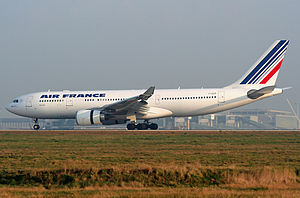Since 2005 Flight Attendant and Airline News: Humorous, Entertaining Prose With a Dose of Insanity
Wednesday, June 08, 2011
Air France black box: Air France Flight 447 was brought down by a combination of faulty speed sensors and confusion in the cockpit, according to a preliminary analysis by French investigators.
One of the two flight recorders from the Rio-Paris Air France Flight 447 which crashed in 2009 is displayed for the media before a news conference at the BEA headquarters in Le Bourget, northern Paris, in this May 12 file photo. Pilots wrestled with the controls of the Air France airliner for 3.5-minutes before it plunged into the Atlantic with its nose up, killing all 228 people on board in 2009, French investigators said on May 27.
By Christa Case Bryant, Staff writer / May 27, 2011
A preliminary report on the Air France Flight 447 crash in the Atlantic Ocean two years ago suggests that while some equipment malfunctioned, the pilots’ inability to respond properly to key instruments sent the plane into a 3.5-minute plunge that killed all 228 people aboard.
Air France Flight 447 wreckage (but no black box) found in Atlantic Air France crash prompts changes in Airbus speed sensors Air France crash: Probe into two other A330 incidents The findings by France's Bureau of Investigations and Analyses, based on data recently recovered from the Airbus 330’s black boxes, bolster early suspicions that speed sensors known as Pitot tubes had iced over and malfunctioned. This was a problem on Airbus planes that Air France had been aware of at the time of the crash, which occurred en route from Rio de Janeiro, Brazil, to Paris.
But the findings indicate that it wasn't the malfunctioning speed sensors alone that brought the plane down. They also suggest that pilots had enough information at their fingertips to determine what was happening, suggesting that they were not experienced or not prepared to deal with the sudden crisis that developed two hours into the transatlantic flight. Cockpit displays remained accurate and the engines remained fully functional and responsive to the pilots throughout the flight.
When a plane such as the Airbus 330 in question gets conflicting information from various speed sensors, the autopilot and auto-thrust systems shut down – handing control over to the pilot.
That’s precisely what happened two hours and 10 minutes after Flight 447 left Rio, less than 10 minutes after the captain had left the cockpit for a routine break. He was quickly called back to the cabin to try to help the copilots respond to repeated warnings as the plane stalled, and began falling toward the ocean.
However, it was a 32-year-old co-pilot – the least experienced of three pilots on board – who was at the controls until the final minute of the flight. The plane hit the ocean 4-1/2 minutes after the autosystems disengaged, falling at a rate of nearly 11,000 feet per minute.
The Air France pilots apparently tried to bring the nose of the plane up when it stalled, contrary to the conventional wisdom that pushing the nose down will help increase airspeed and bring an aircraft out of a stall, according to an aviation expert quoted by Bloomberg.
“The question is why the pilot kept giving nose-up inputs when the plane was in a stall,” said Paul Hayes, director of safety at Ascend Worldwide Ltd., a London-based aviation consultant company. “You should put the nose down to recover speed.”
Air France praised the professionalism of the pilots in the final moments of the flights, but numerous reports suggest that the airline had failed to give them the training necessary to respond to such a crisis at high altitude – a fault it is now trying to remedy with new training procedures.
Subscribe to:
Post Comments (Atom)


No comments:
Post a Comment